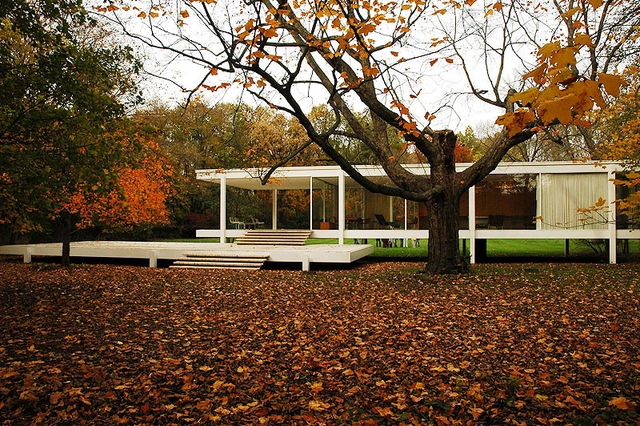
In 1951, Mies van der Rohe completed a house in Plano, Illinois that was the epitome of his modernist ideals; with a steel structure surrounded entirely by glass walls the building perfectly connected the user with its idyllic natural setting, and it was - and is - venerated as a masterwork. A lesser-known story about the work is how its owner Dr Edith Farnsworth attempted to sue her architect, in a story of bitterness and unrequited love - but even less well-known, argues Nora Wendl, is the story of what really happened. In this excerpt from her essay "Uncompromising Reasons for Going West: A Story of Sex and Real Estate, Reconsidered," published in Thresholds issue 43: "Scandalous," Wendl examines the overblown and dubious assertions made about Farnsworth's intentions, finding that the truth may be much more simple: perhaps the Farnsworth House is just not a pleasant place to live.
“I have decided to speak up.”
Such is the threshold between a private affair and a public scandal: one person speaks. These are also the opening lines to “The Threat to the Next America,” which appears in the April 1953 issue of House Beautiful. Penned by editor Elizabeth Gordon, the article describes an unnamed, but “highly intelligent, now disillusioned, woman who spent more than $70,000 building a 1-room house that is nothing but a glass cage on stilts.”[1] Gordon warns readers of a design movement sweeping the nation:
Something is rotten in the state of design—and it is spoiling some of our best efforts in modern living. After watching it for several years, after meeting it with silence, House Beautiful has decided to speak out and appeal to your common sense, because it is common sense that is mostly under attack. Two ways of life stretch before us. One leads to the richness of variety, to comfort and beauty. The other, the one we want fully to expose to you, retreats to poverty and unlivability. Worst of all, it contains the threat of cultural dictatorship.[2]
















